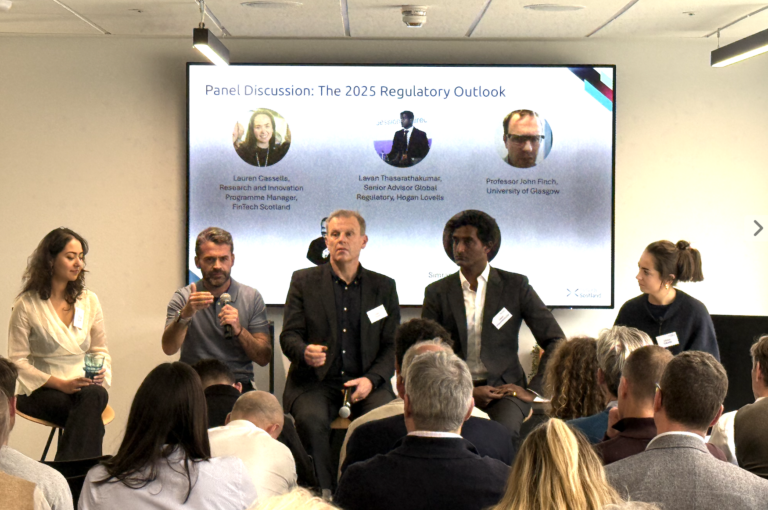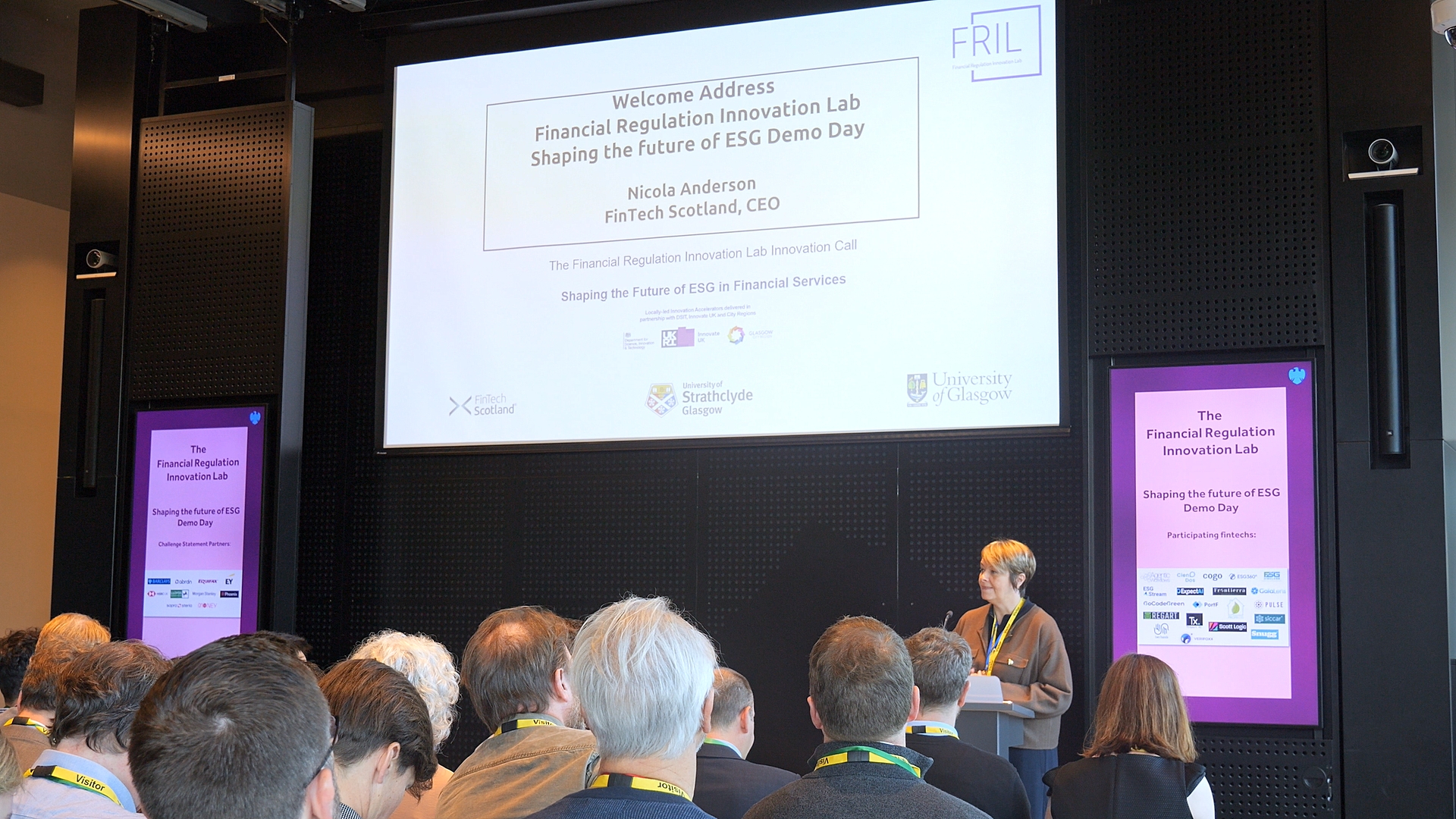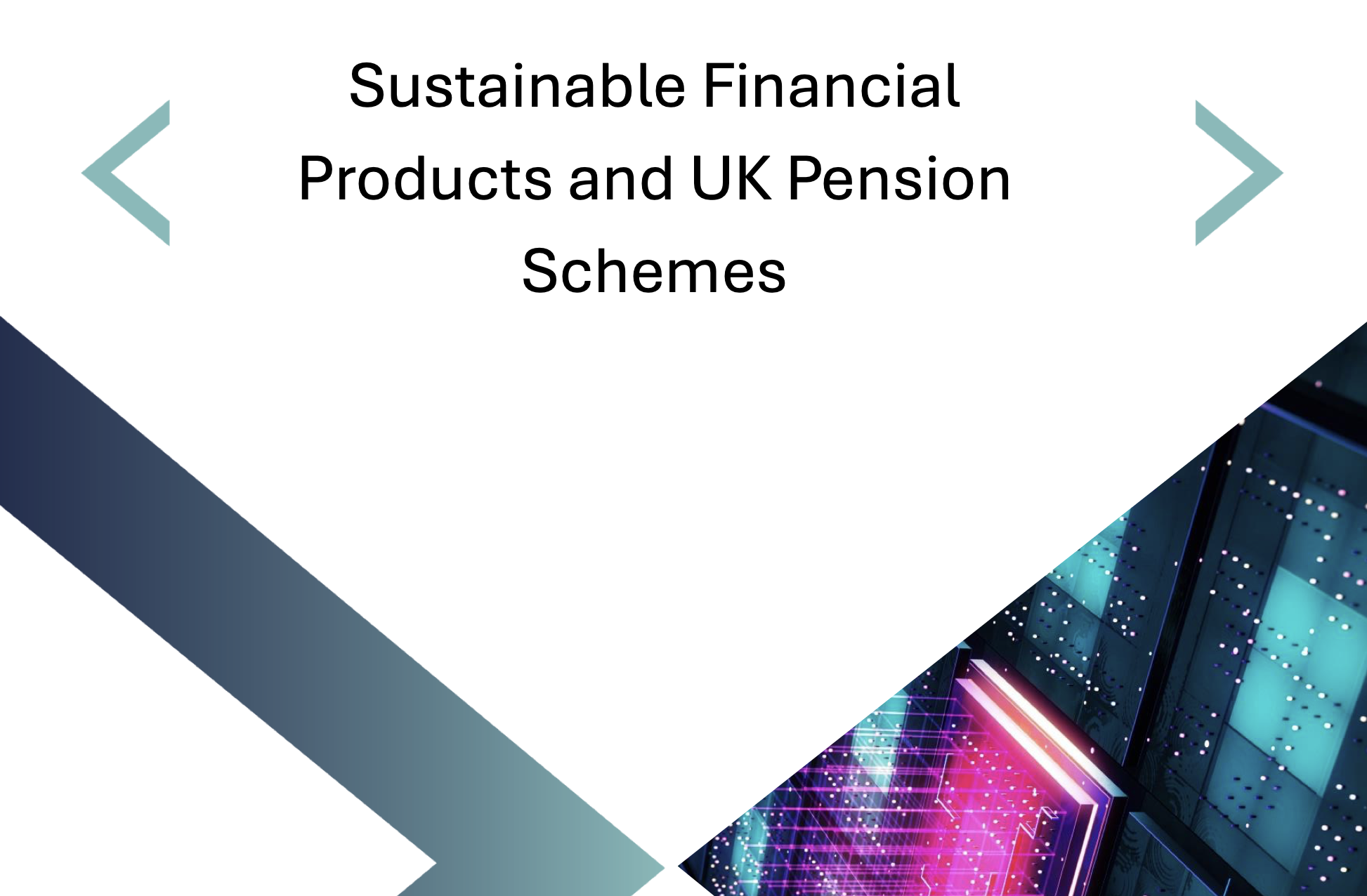Can Technology Transform and Simplify Regulatory Compliance?

At the recent Financial Regulation Innovation event in Glasgow, part of the FinTech Scotland Festival, hosted by Barclays and FinTech Scotland, experts, industry leaders, and academics discussed how new technologies are reshaping regulatory compliance.
Featured speakers included representatives from Barclays, the FCA, Morgan Stanley, Pinsent Masons, and leading fintech firms such as Amiqus, Aveni, Encompass, Exizent, Corlytics, Malted.Ai and docStribute. , providing diverse perspectives on the practicalities and potential of technology in this area.
AI as a Powerful Tool for Compliance
AI was discussed at length as a transformative tool that has the potential to streamline compliance processes while enhancing precision. However, implementing AI for regulatory purposes requires careful integration, especially within legacy financial systems. Without the right infrastructure, this transformation is challenging. Industry leaders highlighted that good data input is crucial to AI model reliability. As one speaker put it, “You get out what you put in” — a reminder that faulty data can compromise outcomes and increase risk.
Ensuring Privacy and Security in AI Applications
Privacy and security were recurring themes, with experts stressing the importance of keeping private data out of models (favouriting synthetic data) and creating “fail-safe” designs. This approach ensures that if errors occur, they aren’t catastrophic. For example, speakers from innovative tech firms presented privacy-enhancing technologies and zero-knowledge proofs, which allow companies to meet compliance requirements without exposing sensitive data.
Future Horizons: Advanced AI Models and Compliance
Next-generation AI models offer exciting possibilities for compliance by tackling more complex, ambiguous tasks over longer time frames. By expanding AI capabilities, the sector aims to unlock entirely new areas of automation and efficiency. However, this shift also requires that financial services firms cultivate higher levels of AI literacy across teams. According to one academic at the event, we are witnessing the “next wave of compliance innovation, requiring regulatory understanding and technical fluency in parallel.”
Regulatory Approaches: EU AI Act vs. UK Ecosystem Model
A panel discussion touched on the contrast between the EU’s AI Act and the UK’s ecosystem approach to regulation. The EU’s model is characterised by a “top-down” structure, while the UK leans toward a more flexible, “bottom-up” framework. The EU’s structured guidelines provide strict compliance benchmarks, while the UK’s adaptable ecosystem approach supports innovation by allowing firms more flexibility in their compliance methods.
Skills for the Future
As regulation and technology evolve together, the skills needed within compliance and risk teams will also change. Smaller, targeted language models are becoming popular for specialised tasks, complementing larger models. These smaller models allow for streamlined implementation and provide focused insights tailored to specific regulatory needs. In the coming years, the industry will likely see growing demand for professionals who can blend regulatory knowledge with AI and data literacy.



